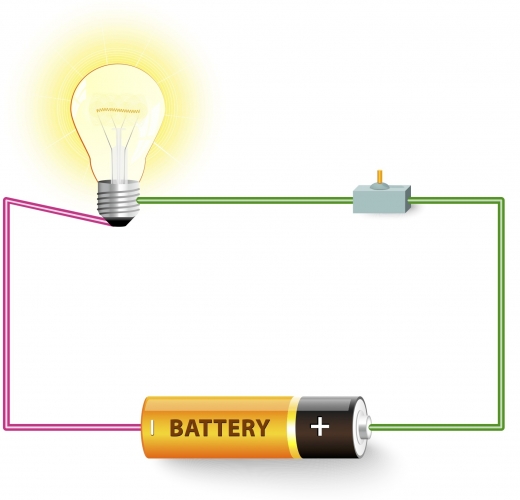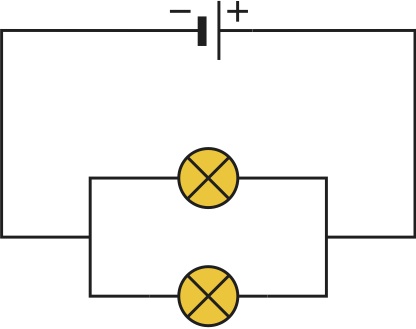There are two types of circuits: a series and a parallel circuit. Diagram 1 shows a simple series circuit with drawings of the components, while diagram 2 shows a series circuit with two light bulbs as a circuit diagram.
Parallel circuits look a bit more complicated than series ones, as you can see in diagram 3. Here is a parallel circuit with two light bulbs.
|
|
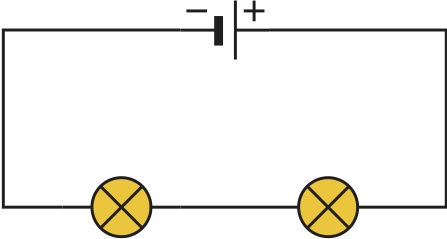 |
|
| Diagram 1 | Diagram 2 | Diagram 3 |
Light bulbs are symbolised as circles with a cross, as shown in diagrams 2 and 3.
Some books or Internet resources use another symbol for light bulbs (see diagram 4).
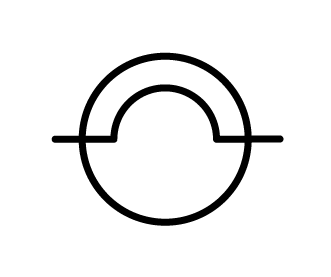 |
| Diagram 4 |
Here are some other electrical circuit symbols (diagram 5):
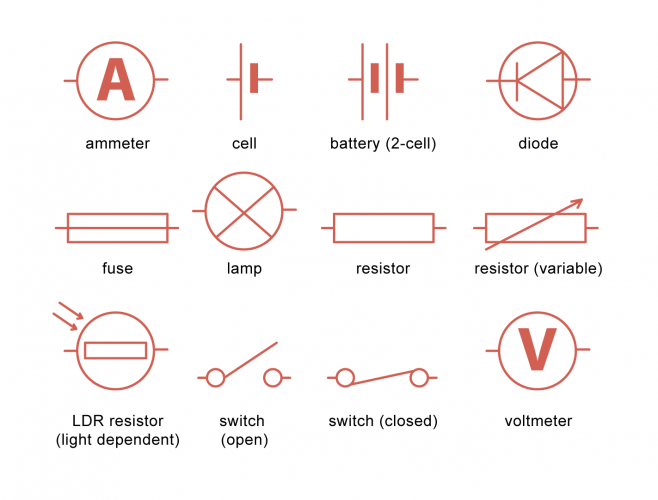 |
| Diagram 5 |
Wires are simply represented as lines.
In a series circuit, all bulbs light together and if one breaks, a gap is created in the circuit, so none of them works. In a parallel circuit, the current flows along all branches. If one light bulb is broken, the others can still work. Christmas lights are connected in parallel. No one wants their Christmas lights to switch off just because of one bulb!

In a series circuit, adding more bulbs would make all of them dimmer because this would increase the resistance in the circuit. In a parallel circuit, though, if you add more branches with bulbs in them, they will all still be bright.
Current is the same everywhere in a series circuit, but it splits up in branches in a parallel circuit. In the latter, current in all the smaller branches adds up to the current in the main branch.
There's lots to take in there, so remember that you can look back at this page by clicking on the red help button on the screen at any point.
Let's get started.

